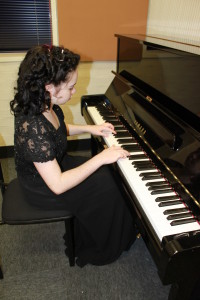It doesn’t seem right that something so beautiful as music can cause terrible, enduring pain for the creator.

Sharing my home with an aspiring concert pianist (a busy young lady who has also spent years studying violin, harp, and classical voice) means I have seen first hand just what can happen through overuse, incorrect practice, or simply through not knowing what the consequences may be. She has also shared stories of the pain experienced by fellow musicians as they commit themselves – quite vigorously at times – to perfecting their craft. Such injuries can have devastating, long-term consequences, with permanent conditions meaning a change in career may not be a choice, rather the only option.
My daughter commenced her tertiary studies this year, and pleasingly one of her classes covered how to practice ‘smart’, so that less time was spent fixing more problems, thus minimising exposure to potential injury. If injured, the students were advised to cease practice immediately and to notify teachers of any discomfort and pain in particular. Students were also provided with contact details for a physiotherapist who specialises in music-related injury management.
Consistent with this advice, my daughter mentioned to her instrumental teacher that she was experiencing pain whilst practising certain pieces of music for lengthy periods. Her teacher strongly counselled her to immediately cease all practice, including typing (which is fundamentally the same movements as playing a piano), and allow her wrists, her thumbs, and her little fingers time to recuperate. Her teacher is mindful that she has relatively small, young hands (she is 15 years old) and is playing quite challenging repertoire.
Given my first-hand exposure to the realm of injury in music, I had a look through some recent publications. If you are interested, here are some interesting papers: Rickert, Barrett and Ackermann have produced a two-part series exploring injury in the orchestral environment (see http://www.ncbi.nlm.nih.gov/pubmed/24337034 ; http://www.ncbi.nlm.nih.gov/pubmed/24925177); Chan, Driscoll, & Ackermann examined the usefulness of triage services for professional orchestral musicians (http://www.ncbi.nlm.nih.gov/pubmed/23506482); and the reframing of the injury-prevention issue of likening musicians to athletes was an interesting read (http://www.ncbi.nlm.nih.gov/pubmed/24225525).